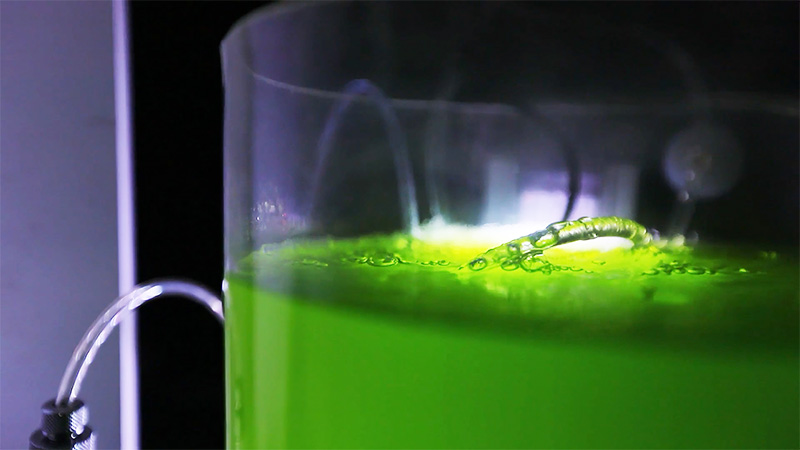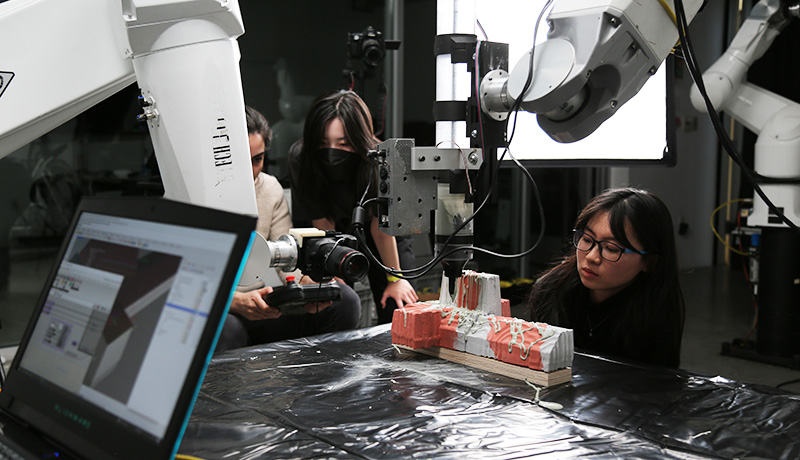AlgaeClad
Southern California Institute of Architecture (SCI-Arc)︎
BIOCERAMIC FACADE:
ARCHITECTURE AGAINST CLIMATE CHANGE
As one of the largest cities in the world, LA faces a range of environmental issues, in particular air pollution. Automotive, cargo ship, rail, and industrial exhaust all reduce air quality across the Los Angeles Basin. With CO2 emissions more than double the allowable threshold, we wanted to design a system for the Continental Building that not only mitigates CO2 emissions in the city but also produces oxygen. Our project proposes a facade system that is able to scrub the CO2 generated around it in downtown LA and feeds the captured CO2 to an algae farm embedded in a ceramic shade structure, creating both clean oxygen and valuable algae-based products and materials.
Course Description:
Recent estimates hold the construction and building industries responsible for nearly 38% of the global energy-related emissions currently fueling catastrophic changes to our climate. In the wake of this fact, the global impact of what we design and how we build has become the center of Architectural discussion.
1.5°C explored this topic by investigating the potential of design, technology, and new materiality in Architecture as a means of aiding the global fight against environmental warming and accelerating climate change. This course evaluated design at the confluence of sustainable materials (ceramic, low-carbon, etc) and robotics with emphasis on emerging fabrication techniques, synthetic ecology, and net zero Architecture.
Course:
Advanced Robotic Fabrication 2022 | 1.5C: Architecture Against Climate Change
The Southern California Institute of Architecture
Instructors:
Garrett Sutherlin Santo & Herwig Baumgartner
TA: Kait Cartmell
Students:
Andrew DePew, Jiyun Kim, Nghi Nguyen, Saeri Shojima, Eda Tarakcı, Dheer Talreja, Jure Zibret
Course Description:
Recent estimates hold the construction and building industries responsible for nearly 38% of the global energy-related emissions currently fueling catastrophic changes to our climate. In the wake of this fact, the global impact of what we design and how we build has become the center of Architectural discussion.
1.5°C explored this topic by investigating the potential of design, technology, and new materiality in Architecture as a means of aiding the global fight against environmental warming and accelerating climate change. This course evaluated design at the confluence of sustainable materials (ceramic, low-carbon, etc) and robotics with emphasis on emerging fabrication techniques, synthetic ecology, and net zero Architecture.
Course:
Advanced Robotic Fabrication 2022 | 1.5C: Architecture Against Climate Change
The Southern California Institute of Architecture
Instructors:
Garrett Sutherlin Santo & Herwig Baumgartner
TA: Kait Cartmell
Students:
Andrew DePew, Jiyun Kim, Nghi Nguyen, Saeri Shojima, Eda Tarakcı, Dheer Talreja, Jure Zibret











